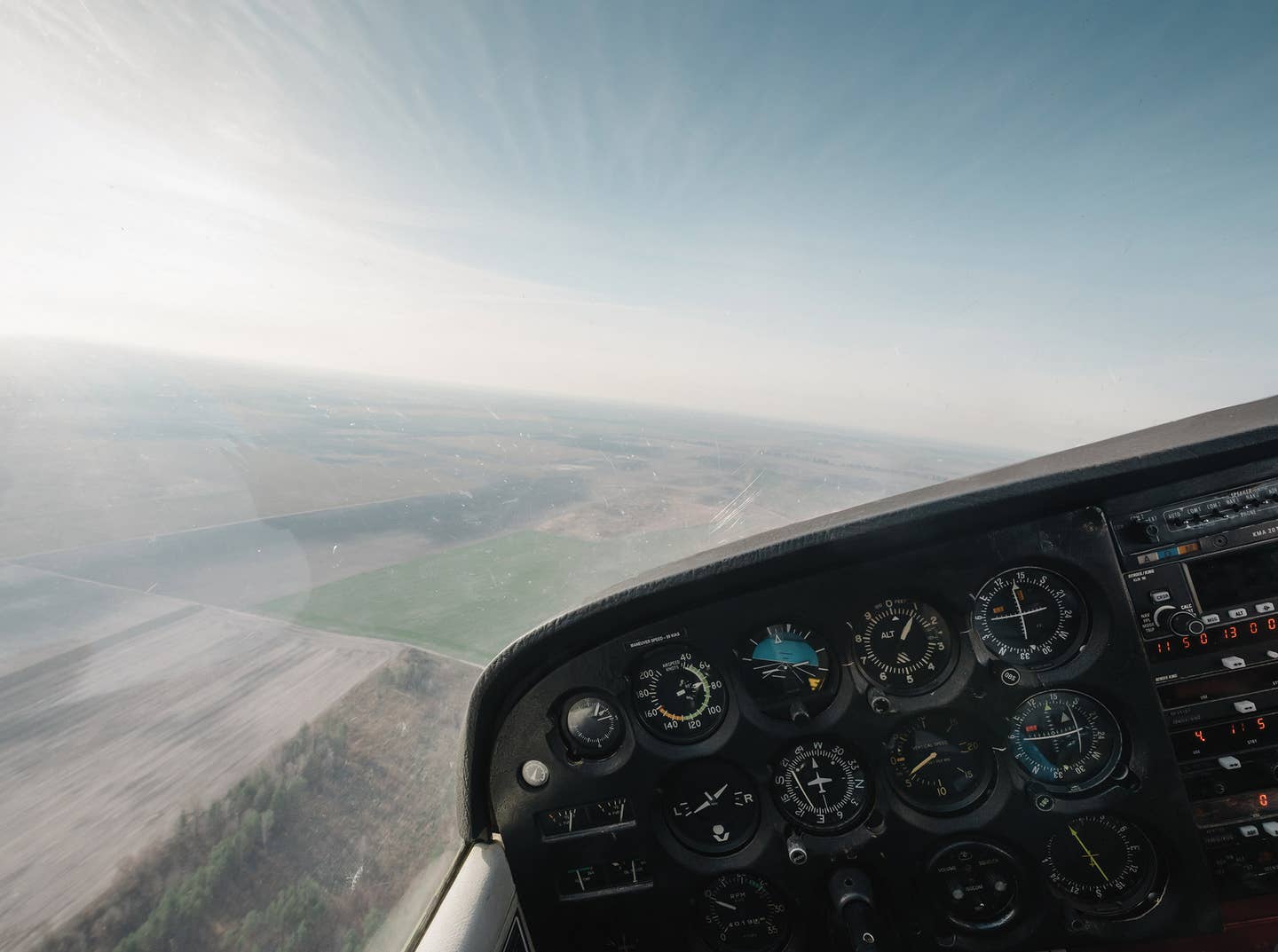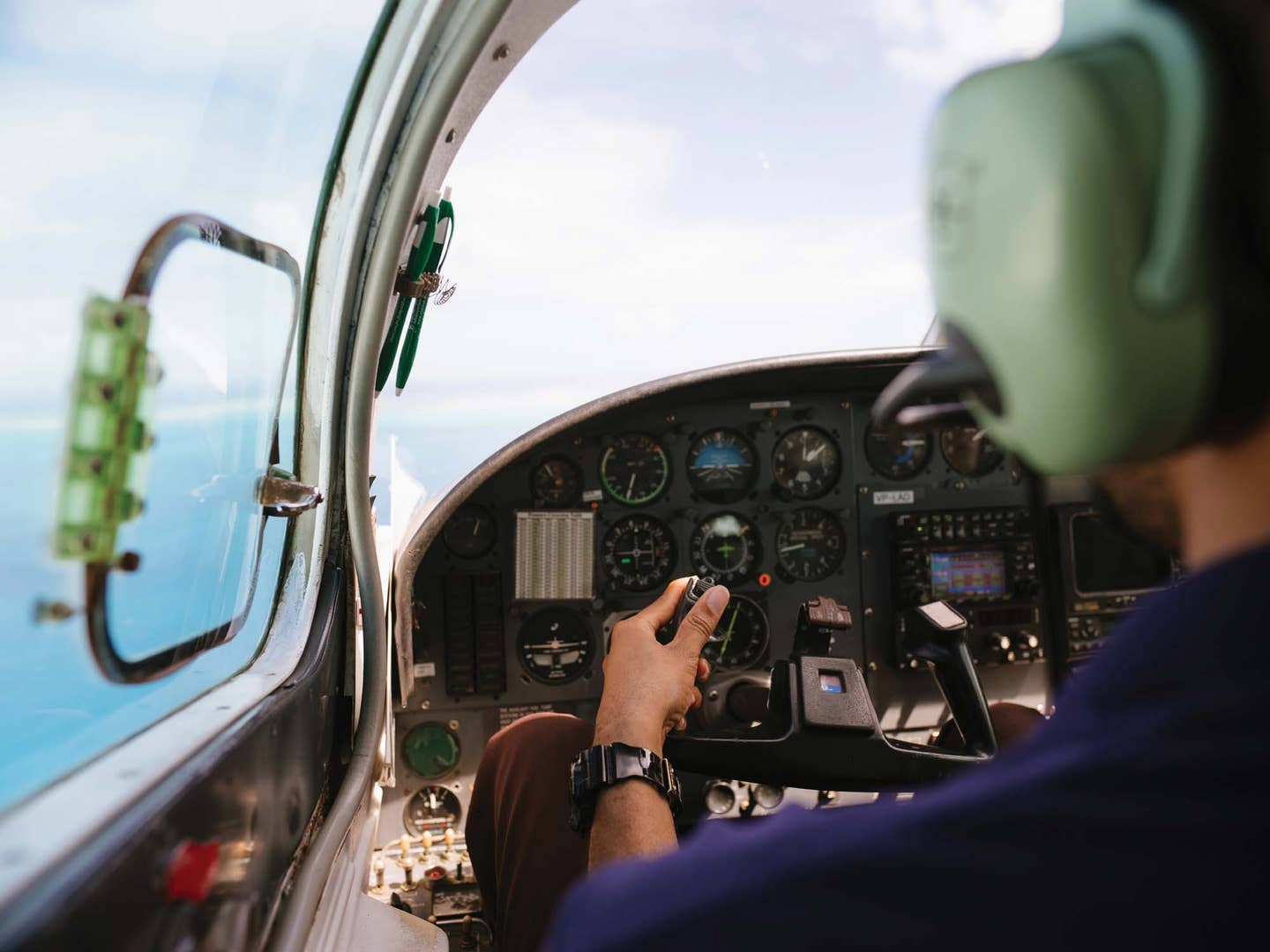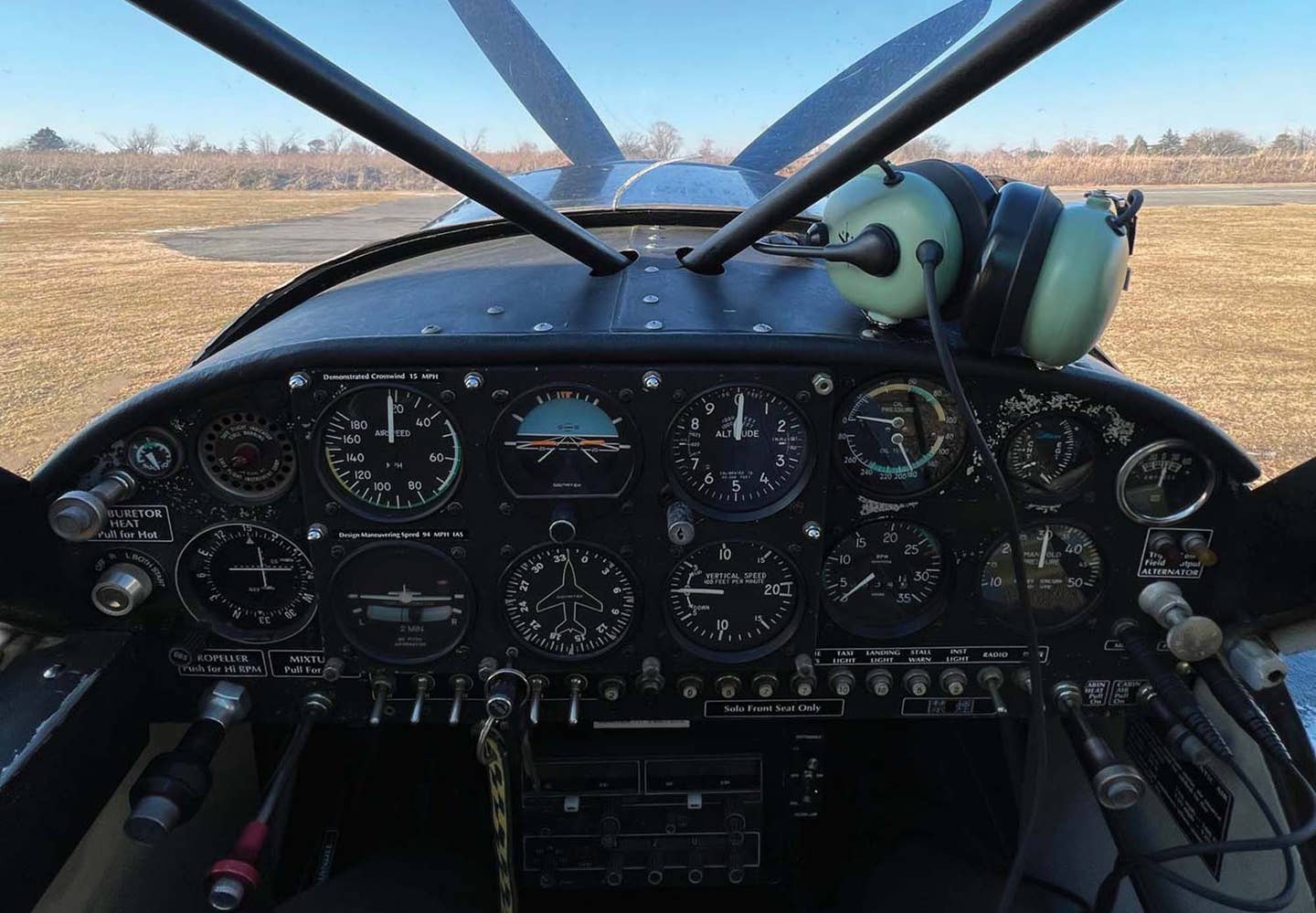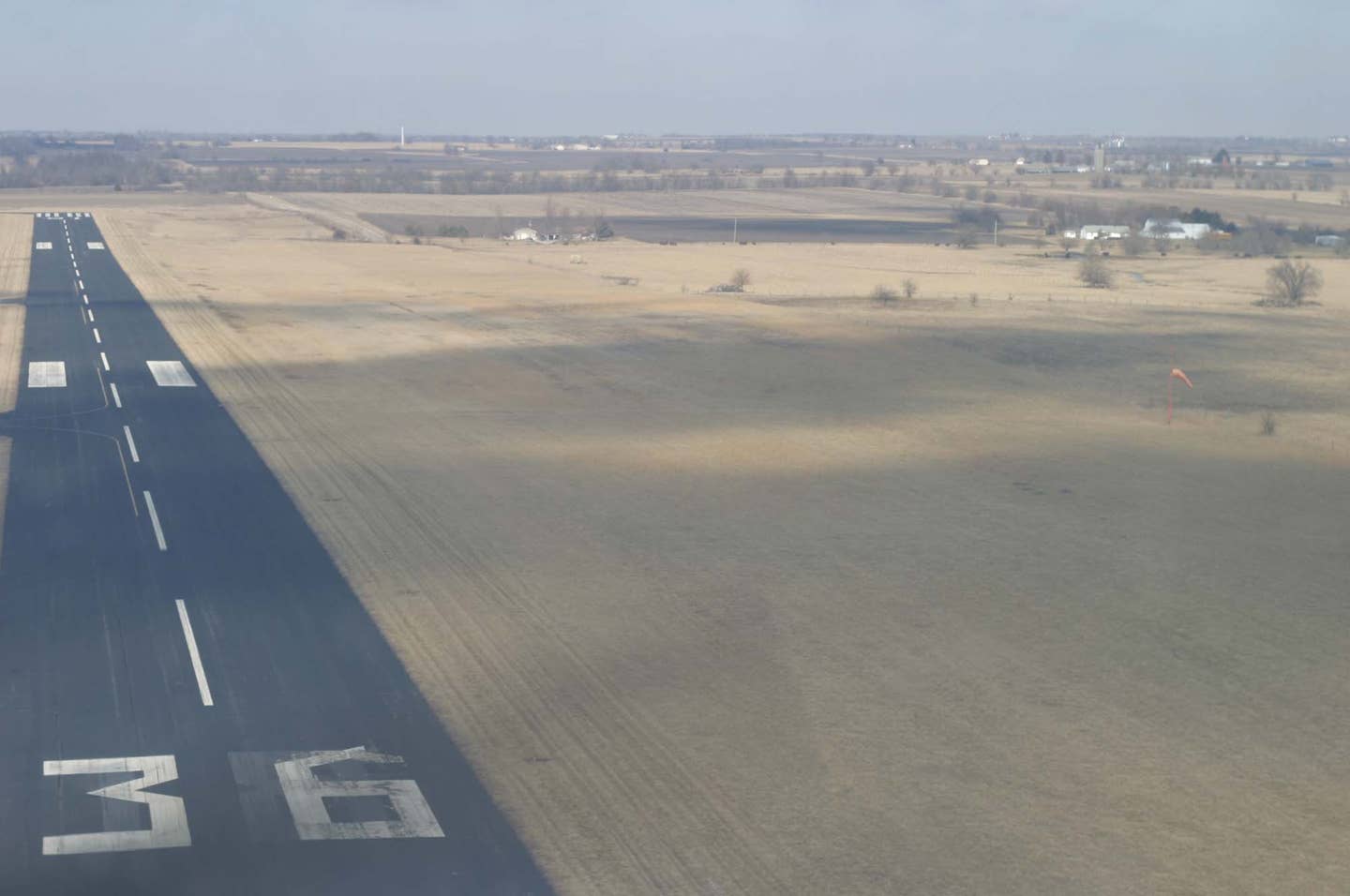Pro Tips: Traffic Pattern Manners and Etiquette
Etiquette is defined as a “customary code of polite behavior among members of a particular profession or group.” Pilots understand that adherence to professional standards is nowhere more critical than…
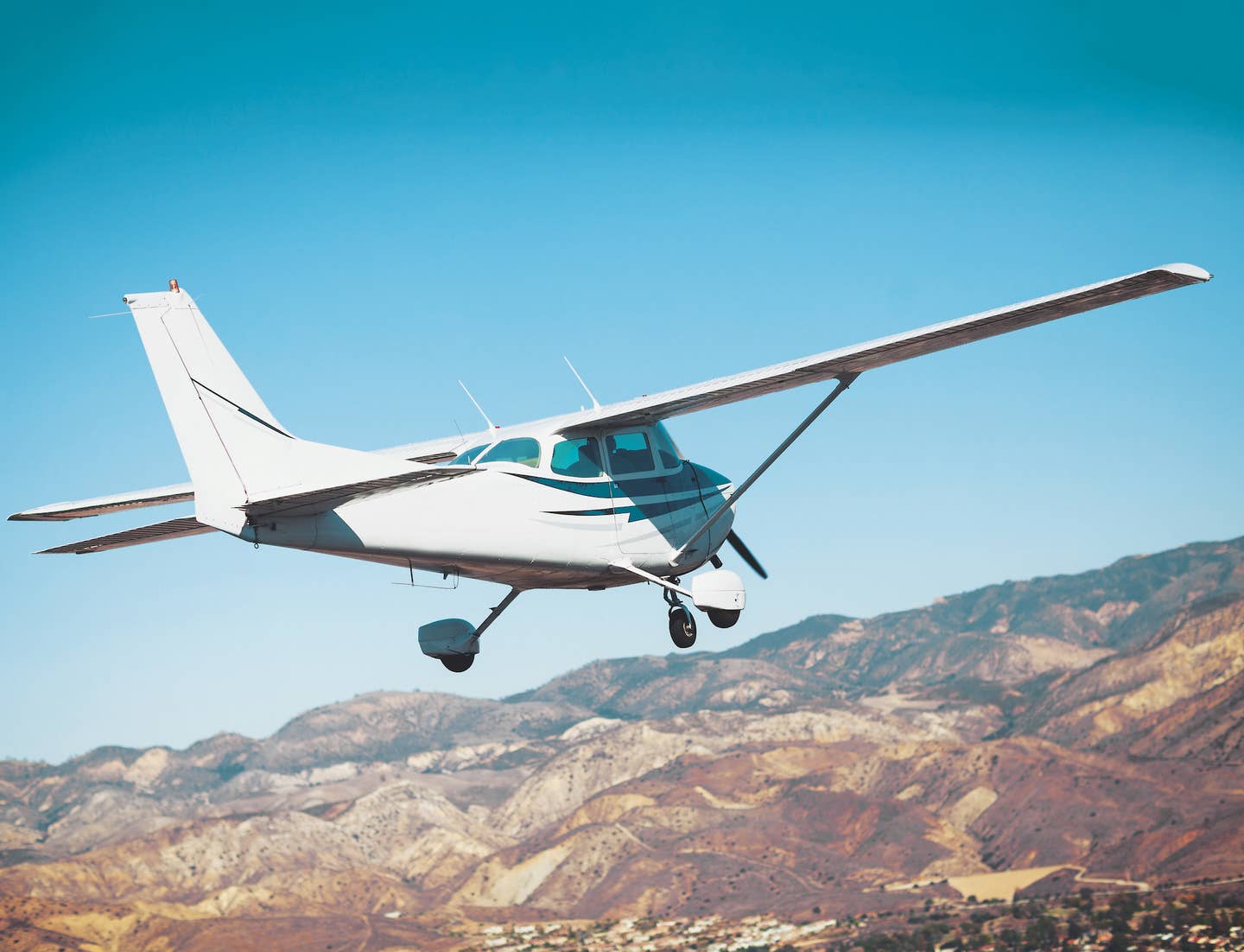
Our behavior in the traffic pattern is a reflection of just how professional we are. [Adobe Stock image]
Etiquette is defined as a “customary code of polite behavior among members of a particular profession or group.”
Pilots understand that adherence to professional standards is nowhere more critical than during approach to the airport and landing. Fighter pilots instinctively understand this. When they return to the airfield or aircraft carrier, the formation gets a little tighter and the radio calls are more concise.
They follow the rules partly because they understand the cost of making a mistake is high, and they know everyone is watching.
The Super Bowl of traffic pattern operations is Hartsfield-Jackson Atlanta International Airport (KATL) during rush hour. Hundreds of flights coordinated into an aerial ballet, a series of machine-gun-like radio instructions, carrying thousands of passengers safely to their terminal just in time so they can run and catch their next flight. Achieving this level of safety and efficiency requires everyone to adhere to a strict code of behavior. However, the same may not always be said of the traffic pattern at your local towered or especially nontowered airport.
So why do we care about traffic pattern discipline so much? According to the FAA’s Airplane Flying Handbook (AFH), the vast majority of midair collisions occur in good visibility between aircraft going in the same direction, near uncontrolled airports, and at altitudes below 1,000 feet. Sounds like Saturday afternoon in the touch-and-go pattern. Maybe it is worth a few minutes to review the basics of traffic pattern requirements, midair collision avoidance, and proper pattern etiquette.
High Wings, Low Wings, and the Standard Traffic Pattern
The “Friendly Aviation Administration” is sufficiently concerned about traffic pattern etiquette to have just released an update to Advisory Circular 90-66C, “Non-Towered Airport Flight Operations.” However, this updated AC, the AFH, and Pilot’s Handbook of Aeronautical Knowledge (PHAK) are all quick to point out that the FAA does not regulate traffic pattern entry—only the traffic flow pattern. Thus, all traffic at a nontowered airport is expected to blend into the existing left traffic pattern unless right traffic is specified on the sectional chart or the chart supplement.
However, if we look carefully at the recommended box-shaped general aviation traffic pattern with its series of straight and level legs connected by brief 45- and 90-degree turns, it is designed to nearly eliminate the blind spots associated with both high- and low-wing aircraft. The 45-degree entry leg allows for aircraft entering and those in the pattern to see each other out the side windows while still in level flight. The level downwind and base legs, each separated by 90-degree turns, perform the same function. We might ask, why does the FAA recommend traffic on the crosswind leg turn onto downwind after reaching pattern altitude? Once again, it reduces the risk associated with the high-wing/low-wing blind spot.
Nonstandard Patterns, Blind Spots, and Belly Checks
So, what happens when things do not go strictly to plan? A couple of recent accidents come to mind.
On May 12, 2021, a Cirrus SR22 at Centennial Airport (KAPA) in the Denver suburb of Englewood, Colorado, made what may have been a nearly constant base turn at higher-than-normal pattern speed and literally flew right through the rear upper fuselage of a Fairchild Metroliner on a straight-in approach. Thankfully, the Metroliner landed on the runway, and the Cirrus parachute saved the day for the single.
Then, on July 17, 2022, there was an accident involving a Piper Malibu and a Cessna 172 both operating at North Las Vegas Airport (KVGT). The towered airport has parallel runways: 12R/30L and 12L/30R. The Piper Malibu was making a teardrop-shaped constant left turn to final from midfield, was assigned Runway 30L but appeared to line up on Runway 30R and collided with a Cessna 172 making a right base to final turn to the same runway. All four occupants of the Cessna and Piper were killed. These two accidents highlight a significant visibility limitation inherent in every aircraft. Once we have accounted for the high/low-wing visibility limitation, the remaining blind spot is the belly of our own plane.
Our fighter pilot friends can’t see through the floor of their jets either. OK, so the F-35 with its $400,000 pilot helmet actually can, but that’s another story. When a fighter pilot executes a quick descent or a sustained steep turn, a quick roll to the left or right, often called a belly check, allows them to clear this primary blind spot. Fly the pattern too fast, fail to roll out on the base leg, or fly a nonstandard curvilinear turn to the final approach, and you increase your risk of being belly up to other traffic. Follow the recommended pattern etiquette, and you dramatically reduce the chance of a collision.
Another example of mixing curved and box patterns is the overhead pattern. This approach, often used by warbirds, especially in formation, consists of an initial leg at pattern altitude, followed by a 180-degree “pitch out” to the downwind and another 180-degree turn to final. This military pattern is a great method to get fast airplanes, especially in formation, slowed down, separated, and on the ground quickly, notably at a towered airport where the traffic flow can be managed. However, at a nontowered airport it places the airplane turning downwind from the overhead pattern belly up to anyone joining the downwind from the 45-degree leg. The same thing occurs with the curvilinear turn to final.
The moral of the story is that mixing curvilinear and box patterns creates belly blind spots that the designers of the recommended nontowered airport traffic pattern can’t help you with.
The Crosswind Entry Option
Gather any 10 pilots together and ask about the best method for entering the downwind leg crosswind from midfield and watch the arguments begin. The option preferred by the FAA involves crossing the airport at midfield 500 feet above pattern altitude and then making a constant turning descent to join the 45-degree leg to downwind (see AFH Chapter 8, fig. 8-3). This approach makes it easier to blend into traffic.
However, the constant descending turn to the 45-degree entry leg places the pilot belly up to aircraft entering on the 45-degree entry. Sounds like a belly check is in order. The other alternative involves entering a midfield crosswind leg at pattern altitude and then joining the downwind. The plus is that all the traffic is in the pilot’s front and side windows before the turn. The downside is that two aircraft, one turning downwind from the crosswind leg and another on the 45-degree entry, are belly up to each other. Whichever you choose, it is good to understand the plus and minuses of each, and the need to check your belly blind spot for traffic.
Proper Communication Etiquette
There is no requirement to make radio calls in the pattern at a nontowered airport. In fact, NORDO (no radio) airplanes are welcome. Having said that, our friends at the FAA remind us that concise and accurate “self-announcement” is the proper etiquette. The term self-announcement is a reminder that each transmission should announce your position and intentions so that others in the pattern can plan accordingly. The updated advisory circular goes to great pains to drive home a couple of salient points.
First, radio calls should include the type of aircraft and the N-number. Recently, I have noticed pilots substituting the color and type of aircraft for the N-number. I fly at a busy feeder airport that serves at least five flight schools. So, when a pilot transmits “blue-and-white Cessna turning base,” I casually look out the window and note that there are at least five Cessnas that fit that description in the pattern.
Second, the FAA reminds us that the phrase “any traffic in the area, please advise” is a nonstarter. I believe the point it is trying to make is that traffic pattern radio calls are not a conversation. Rather, each “self-announcement,” starting at 8 to 10 miles out and ending when we clear the runway, is for the benefit of the entire pattern to provide a safe environment.
Start Planning Early
Hey, I seem to remember that my CFI asked me to start planning my arrival before takeoff, not 10 miles out! Hmm, I thought the traffic patterns here are all left hand, right? Not so fast. If the letters “RP” are listed below the runway length and elevation on the sectional, then a glance through the chart supplement will reveal right-hand traffic prevails on one or more runways. Preflight is also a great time to catch up on possible noise restrictions, NOTAMs, special instructions, and nearby transmission towers.
I am also an advocate for spending the extra bucks to get ADS-B In as well as ADS-B Out. Having the airport traffic pattern picture on a portable iPad while still 10 miles out is priceless. I tend to use the traffic information to correlate the N-numbers I hear on the radio (no aircraft colors or paint schemes please) with traffic locations. All the while I remember that ADS-B of any kind is not required at Class D or nontowered airports. Once established on the 45 to downwind, your Mark One Eyeballs are the best collision avoidance devices. I transition to 100 percent out the window, but the aural traffic alarm provided by the ADS-B In receiver is good insurance while scanning outside for conflicting traffic.
Keeping the Tower Crew Happy
What might the tower crews want us to remember? First, some smaller towers have radar and some do not. In either case, it is important to keep your patterns close in and avoid the dreaded “bomber pattern.” What the tower cannot see, it cannot control. Second, at a busy training airport, be ready to go when you call the tower. If given a clearance for an “immediate takeoff, no delay,” the tower expects your wheels to start turning right away. This is not the time to start the pretakeoff checklist. If you are not ready to go, just say so and stay put. Third, keep your radio transmissions informative and brief. If you have a question, please be sure to ask, but beware of the long-drawn-out soliloquies that block the frequency. Fourth, if cleared to land number three, make sure to visually identify both number one and number two. Failure to do so may result in one of those high-wing/low-wing close encounters, or worse, on final approach. Finally, just like at a nontowered airport, be on your guard at all times for traffic. Good traffic pattern etiquette requires teamwork between the tower and pilots.
Be Safe Out There
Greasing on the perfect landing (are we down yet?) is one of the most satisfying parts of flying. Our behavior in the traffic pattern is a reflection of just how professional we are. Just like the jet jocks who clean up their act as they approach the airport traffic pattern, we all have a responsibility to be prepared, know the rules and recommendations, and execute the proper traffic pattern etiquette. Midair collision avoidance is a team sport that requires each of us to know where to be and what to do once we get there. Fly safe!
Editor's Note: This story originally appeared in the October 2023 issue of Plane & Pilot magazine.

Subscribe to Our Newsletter
Get the latest Plane & Pilot Magazine stories delivered directly to your inbox

